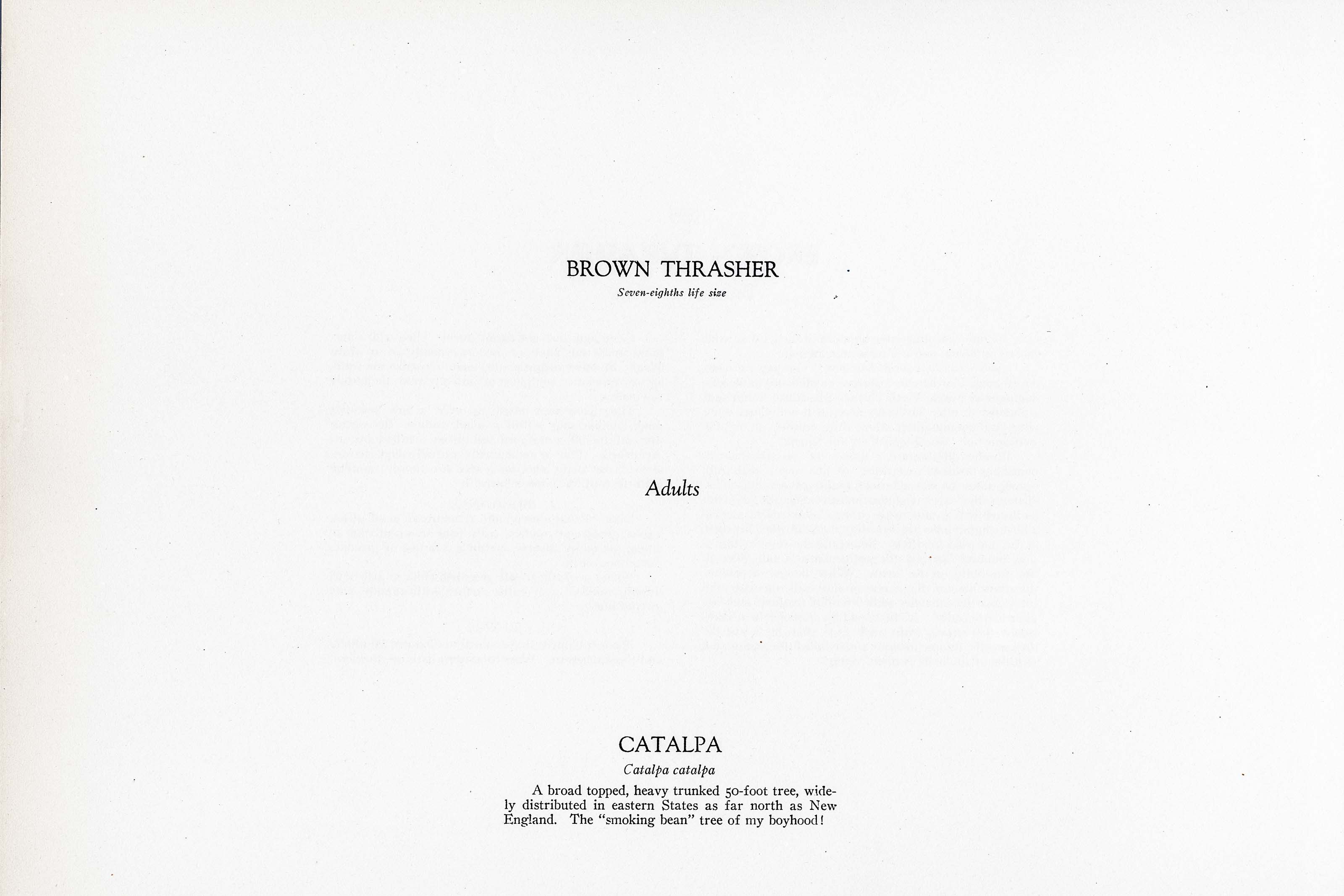






1911
1930
11
705
A team of dedicated board members, volunteers, and student interns has published every page in Volume 9. This volume includes 360 images of paintings and lyrical descriptions of birds, now available online for everyone to enjoy anywhere in the world. This is a monumental task. Each volume requires approximately 400 hours to photograph, edit, transcribe, catalog, and publish online. We need your support to complete this work.
If you're tech-savvy, have a good eye, are meticulous with details, and love structured data, please consider volunteering by emailing us at hello@rexbrasher.org.
We encourage all bird lovers and supporters to consider a monetary donation to support our mission to make Rex's work available for everyone. You can provide a one-time or recurring donation online.
A June morning — the topmost branch of a wild cherrv in bloom and a THRASHER singing.
Look here! look here! look here! Outpours a medley of song. The listener will have no difficulty in detecting notes of Vireo, Wren, Thrush, Blackbird, Robin and a number of other bird calls given with individual slurring and commingling which fully entitles it to the sobriquet of "Mockingbird of the North."
Besides this imitative talent he possesses a remarkably brilliant repertoire of his own, with full, strong notes as characteristic as his personality. The distance they carry is almost unbelievable, the song can be heard half a mile away. Story books often picture a bird singing over his brooding mate but the Thrasher is far too wise for that. Sometimes he sings within a few hundred feet but the performance is not given in the proximity of the home. When danger threatens, the alarm note of the parent on duty calls the mate and they face the intruder with bristling feathers and defiant battle calls. If the would-be despoiler is a black snake they attack with such fury that he is usually driven off. In one instance a pair killed the enemy and fed bits of its body to their young!
Even man does not daunt them. They will sometimes strike the hand or face so violently as to draw blood. In other instances they seem to realize the futilty of resistance, and plead plaintively from the bushes for mercy.
They have been heard to utter a low booming note, audible only within a small radius. In voicing this call the bill is not open and throat feathers are undisturbed. This is undoubtedly an individual characteristic, for many observers, who are thoroly familiar with the bird have never heard it.
NEST: A flat loosely built structure of small sticks, leaves, grass and rootlets, with little or no attempt at lining, placed in thickets, within a few feet of ground; sometimes on it.
EGGS: 3–5; from pale greenish white to pale buff, heavily specked over entire surface with minute spots of chestnut.
Eastern United States, north to Ontario, Manitoba and Saskatchewan. West to eastern base of Rockies.
A broad topped, heavy trunked 50-foot tree, widely distributed in eastern States as far north as New England. The "smoking bean" tree of my boyhood!